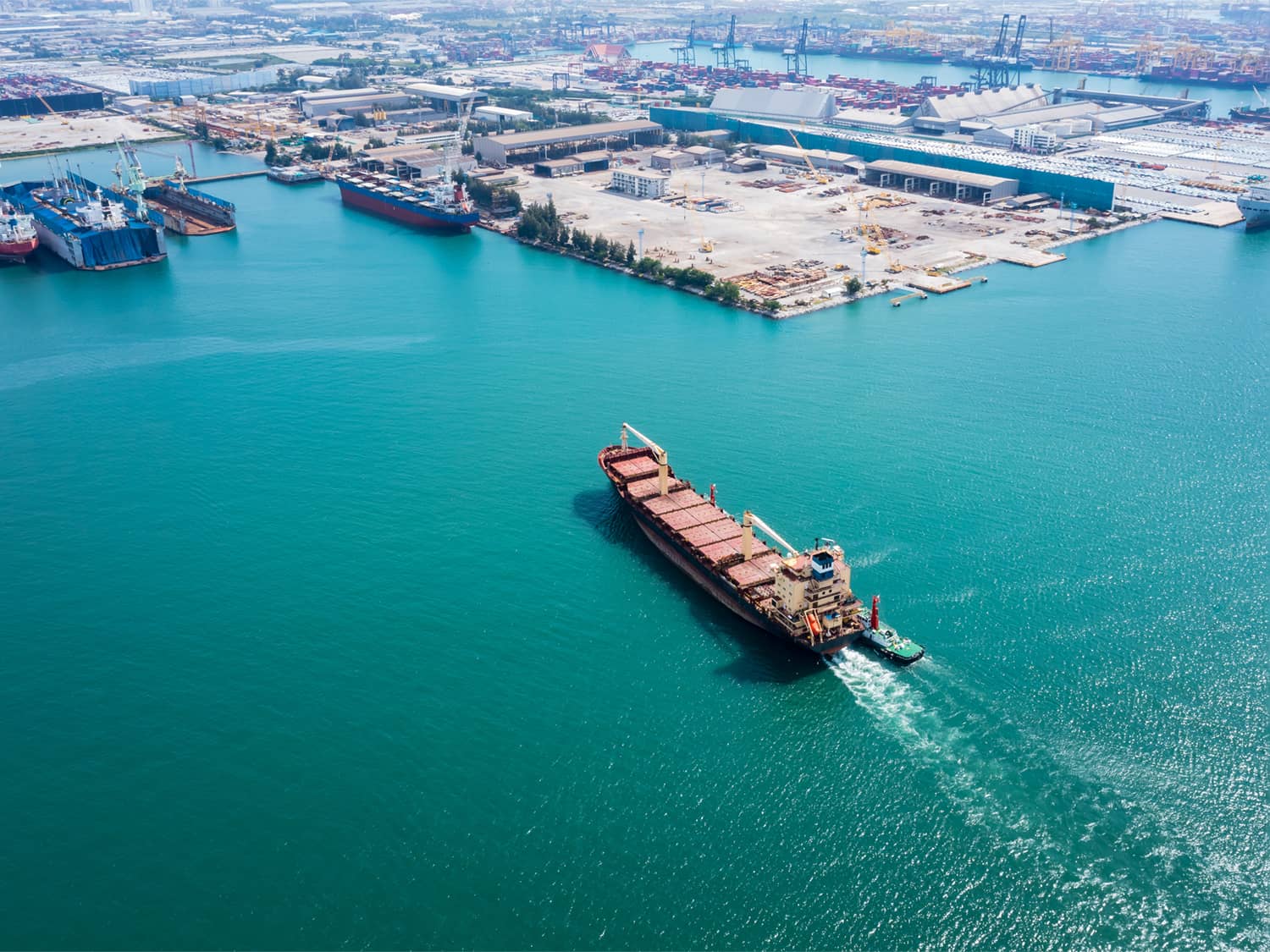The State of GHG Emissions Planning in Oil and Gas
Even the most ambitious energy transition plans still include the production and consumption of significant amounts of oil and gas until 2050 and beyond.

Even the most ambitious energy transition plans still include the production and consumption of significant amounts of oil and gas until 2050 and beyond. Oil and gas companies will be expected to provide an accurate and transparent accounting of their greenhouse gas (GHG) emissions to show that they are not facing excessive risk from future “net-zero” regulations and stakeholder expectations.
Oil and gas producers and their investors will have to create and manage detailed, defensible, and achievable plans to reduce their total GHG impact across their value chains to avoid business risk and carbon cost exposure. Sometimes these risks and costs will be direct and explicit, as in a regulatory reporting or compliance cost for GHGs emitted from your facilities. Alternately, some GHG risks and costs can be indirect or implicit, such as increasing supply chain, logistics, or consumer waste disposal costs, or an increased cost of capital when attracting investors. Either way, it is in the company’s best interest to have a clear view of its total exposure and relative position compared to its peer group.
First, we must understand what the different classes of emissions are, how they can be abated, and what kinds of plans and tools are needed to address them.
Scope 1 Emissions
Scope 1 Emissions are the direct GHG emissions that are emitted from the onsite equipment inside your facility fence line. They are usually grouped into several standard categories such as:
- Stationary Combustion – fixed equipment that combusts fuels to provide process heat or electricity
- Mobile Combustion – mobile equipment that combusts fuels in onsite transportation to move process inputs and outputs around inside the facility
- Note: Mobile equipment whose main job is to move people to, from, and around the job site is not normally considered a Scope 1 but rather a Scope 3 emission (see below), especially if the equipment is licensed for on-road use like cars, trucks, and busses
- Flaring and Incineration – combusting waste gases to prevent odors from other trace chemical species such as sulfur or benzene, or convert methane to CO2, which is a lower impact GHG
- Can be either continuous such as purge gas flows, or intermittent such as emergency flaring during process upsets
- Venting – can be either intentional or incidental, but generally results from equipment working as it was designed
- Tank losses
- Natural-gas-driven pneumatic devices
- Fugitive Emissions – leaks and other unintentional losses of gases to the atmosphere
- Waste and Wastewater – gaseous emissions that evolve from solid wastes or wastewater ponds
- Process Emissions – emissions that arise from non-combustion activities that are a result of the basic inherent chemistry of the process. One example is the process (non-combustion) of CO2 emitted when natural gas is converted to hydrogen in a Steam Methane Reformer
- F-series Gases
- Chlorofluorocarbons, hydrochlorofluorocarbons, and hydrofluorocarbons, used as industrial gases
- Perfluorocarbons, in semiconductors and aluminum
- Sulfur hexafluoride SF6, in high voltage electrical equipment
- Nitrogen trifluoride NF3, in semiconductor manufacturing
Since they result from your activities, they are generally said to be fully under your control, and therefore, most regulations focus on these emissions. Operators need to make plans to directly reduce these onsite emissions by adopting strategies such as:
- Reducing combustion fuel volumes through improved efficiency such as waste heat recovery or reduced recycling
- Switching a high carbon-intensity fuel with a fuel that has a lower carbon intensity per unit of useful energy
- Improving flare efficiency to prevent methane slip
- Capturing and diverting all possible vent sources to a low-pressure flare system
- Installing vapor recovery units (VRUs) on all tank vents, either a low-pressure VRU to flare or a high-pressure VRU to sales
- Replacing natural gas-driven pneumatic devices with air-driven pneumatic devices, or even electronic devices
- Implementing programs to find and immediately repair process leaks (improves personnel safety as well)
- Reducing the volume of solid or liquid wastes stored onsite, and controlling measures to prevent weathering
- Modifying your process to create fewer process emissions, such as adding CO2 capture equipment on your Steam Methane Reformers or installing alternative hydrogen production technology
- Implementing maintenance programs to prevent leaks of high-impact F-series gases
Scope 2 Emissions
Next, Scope 2 Emissions are referred to as indirect GHG emissions because they occur offsite as a result of another entity’s activities to provide your facility with energy services. Categories are:
- Purchased Electricity
- Steam Import
- Offsite Heating or Cooling duty/services (sending a process stream offsite to be heated or cooled by a third party, such as a waste heat recovery facility)
You do not control these emissions directly, but you do control the number of energy services you consume, and therefore some regulations require reporting at a minimum. Potential operator strategies to reduce scope 2 emissions could include:
- Improved equipment and process efficiency to reduce onsite energy consumption
- Switching energy suppliers to one with a lower emissions intensity per unit of energy supplied
- Reducing transmission losses whenever possible
Scope 3 Emissions
What is collectively referred to as Scope 3 emissions are a group of 17 categories of emissions outside of your own facilities and control, which can be divided into two groups:
Upstream Scope 3 emissions – mainly Supply Chain and Logistics emissions from:
- Purchased Goods and Services
- Capital Goods
- Fuel and Energy Related Activities
- Transportation and Distribution of Purchased and Capital Goods
- Waste Generated in Operations
- Business Travel
- Employee Commuting (from home to work site)
- Leased Assets (by suppliers)
Company Scope 3 emissions – company assets that are NOT part of the production process such as:
- Company Vehicles (for moving people, not products)
- Company Facilities (offices and other facilities that are not production facilities, such as company-owned warehouses)
Downstream Scope 3 emissions – emissions from the processing and use of your products by downstream consumers such as:
- Transportation and Distribution of Your Own Products
- Further Processing of Sold Products –This occurs after your operations but before the final consumer, such as petroleum refineries turning crude oil into finished products
- Use of Sold Products – used by the final consumer, such as combusting finished commercial combustion fuels in vehicles
- End-of-Life Treatment of Sold Products – generally disposal or recycling
- Leased Assets (by consumers)
- Franchises
- Investments
These are outside of a producer’s direct control, but there are sometimes commercial, contractual, or collaborative opportunities to work with suppliers and consumers to lower the impact of these emissions categories, such as:
- Gather data and evaluate your suppliers based on relevant GHG data using surveys and relevant reports
- Build GHG KPIs into contracts
- Minimize transportation distances when possible
- Travel only when necessary
- Minimize office energy use and GHG intensity of energy sources
- Hold franchisees and non-operated investments to the same performance targets as owned and operated facilities
Life Cycle Assessment
So which class of emissions does operators and producers need to address? The answer is – all of them. In order to get full credit for activities to reduce GHG emissions in a net-zero world, you need to show that the full life cycle GHG performance is improved across the entire value chain so that there is a net reduction in atmospheric emissions, not just from your own operations. Actions that reduce your own direct emissions at the expense of increasing someone else’s emissions are known as “burden shifting” and it will not be possible to gain credit for these actions.
The most widespread tool for evaluating full life cycle emissions performance is known as Life Cycle Assessment, and while there are many guidelines and standards in place, each study is unique and must be tailored to the research question under study.
Key takeaways:
- Greenhouse Gas Accounting and Forecasting are becoming competitive differentiators in the global energy sector, and you will need to build up your internal capabilities to remain responsive to the rapidly changing stakeholder requirements in this space
- Compliance with regulations is required but insufficient by itself
- You should build your in-house analytical capability to remove dependence on external consultants
- GHG Accounting matters to your regulators, your lenders, your shareholders, and your customers, so it has to matter to you, as a diligent and responsible operator
Future blog posts will expand on the key concepts introduced above.
IEA “Net Zero by 2050 – A Roadmap for the Global Energy Sector”, https://www.iea.org/reports/net-zero-by-2050
Greenhouse Gas Protocol, “Corporate Value Chain (Scope 3) Accounting and Reporting Standard’, https://ghgprotocol.org/standards/scope-3-standard
ISO 14040:2006 “Environmental management — Life cycle assessment — Principles and framework”, https://www.iso.org/standard/37456.html
See how your team can go from forecast to economics in minutes with energy’s fastest analysis engine.
Related Posts
November 8, 2022
GHG Planning and Disclosure in Oil and Gas: SEC Regulations Are Coming
On March 21, 2022, the Securities and Exchange Commission (SEC) voted 3-1 to release a proposed rule titled “Enhancement and Standardization of Climate-Related Disclosures for Investors”.
October 20, 2022
Three Reasons Oil & Gas Companies Are Planning for Net-Zero
Reduce exposure to regulations, create transparent future emissions forecasts to attract capital, and enable a balanced mix of sustainable energy sources.
December 9, 2024
Security and Compliance at ComboCurve
ComboCurve is committed to safeguarding your data through rigorous security measures. We leverage advanced encryption standards and proactively conduct quarterly vulnerability assessments – performing 4X the industry standard of required testing. We employ third-party SOC auditors and penetration testers to ensure we are meeting and exceeding security program guidelines within our internal security program. Our focus is on keeping your data protected, compliant, and accessible to your authorized team members.


